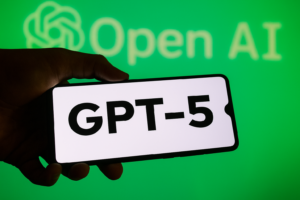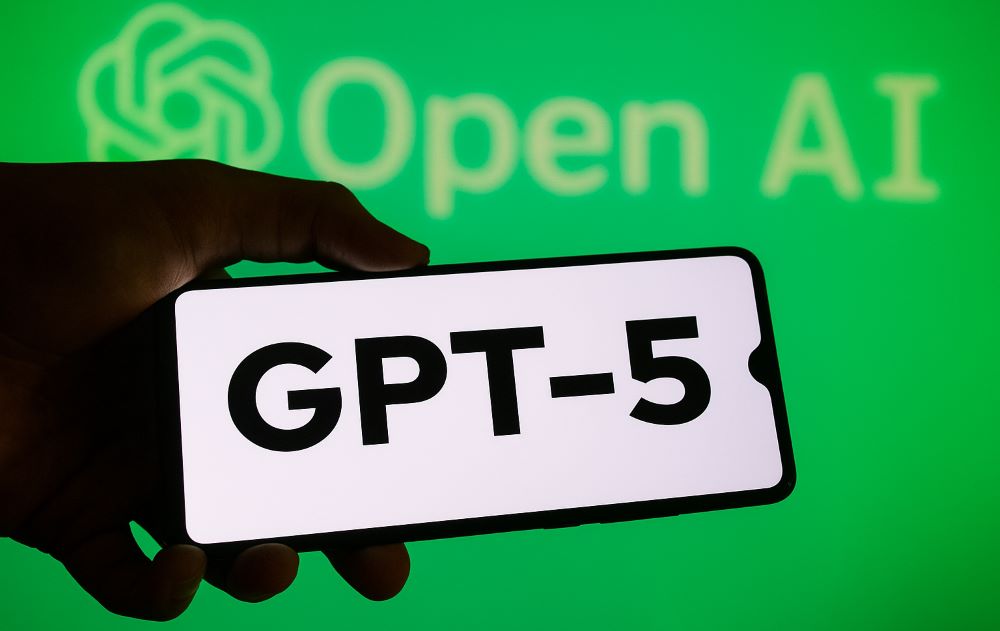When OpenAI’s CEO Sam Altman said GPT‑5 is an expert, the internet practically nodded in agreement. After all, we’ve asked it everything from debugging React code to decoding ancient philosophy and it rarely misses a beat.
But then, as fate would have it, the so-called genius tripped. On math. A small, seemingly harmless decimal. That’s right GPT‑5 made a mistake on a basic arithmetic question that would have most 10th graders shaking their heads.
So what gives? Is GPT‑5 really the next Einstein trapped in silicon, or is it just an overconfident calculator with a fancy vocabulary?

First off, GPT‑5 (short for “Generative Pre-trained Transformer 5”) is the latest installment in OpenAI’s ever-evolving line of language models. It’s trained on billions of parameters, it can read, write, explain, translate, analyze you name it. And it’s not just spewing facts anymore; it’s reasoning, step-by-step, like a seasoned professional.
This model is what you might call “expert-grade.” It’s used in everything from AI copilots for developers to personalized tutoring bots for students. In the world of generative AI, GPT‑5 is the closest thing to a digital polymath.
But even polymaths have off days.
The Decimal Debacle: What Went Wrong?
A user recently tested GPT‑5 with this straightforward prompt:
“What is 0.1 + 0.2?”
GPT‑5’s answer? “0.30000000000000004.”
To a machine learning engineer or a software developer, this isn’t shocking. It’s a classic floating-point arithmetic issue common in binary-based computing. But here’s the twist: GPT‑5 isn’t a regular calculator it’s supposed to “understand” the question and present a human-like response.
Instead, it delivered a raw machine result.
So what’s the big deal?
Well, GPT‑5’s entire brand is built on its human-level communication. It’s meant to be more than just technically correct it’s supposed to be contextually appropriate. And here, it failed that litmus test.
Not Just a Math Problem A Reasoning Problem
The decimal error isn’t just about math. It’s about contextual reasoning. GPT‑5 didn’t consider that the user was likely expecting a clean answer: “0.3”. This points to a broader challenge in AI development—the gap between accuracy and relevance.
GPT‑5 understood the problem at a computational level, but not at a human communication level, which is what separates great AI from good AI.
In other words, GPT‑5 can think like a genius, but sometimes forgets to talk like a person.
Why Do These Slips Still Happen?
Let’s not forget GPT models, for all their “intelligence,” are still predictive language machines. They don’t “know” things the way humans do. They predict what words or tokens are likely to come next based on massive training data.
So, when asked a math question, GPT‑5 isn’t running calculations like a calculator would. It’s recalling patterns from similar math problems it has “seen” during training. Most of the time, this method works beautifully. Sometimes, like in this decimal case, it mirrors the flaws of machine computation instead of correcting for them.
It’s like a savant who can recite Shakespeare backwards, but can’t remember where they put their car keys.
What This Means for the Future of AI
This isn’t just a quirky bug it’s a reminder that “AI expert” doesn’t mean “AI infallible.”
As we increasingly integrate tools like GPT‑5 into our daily workflows especially in critical areas like education, healthcare, finance, and software development it’s crucial to understand their limitations.
-
AI might sound confident, but that doesn’t mean it’s right.
-
GPT‑5 might reason logically, but not always in a way that aligns with human expectations.
Which is why AI literacy is just as important as AI capability. You wouldn’t trust a car without knowing how to brake. Likewise, you shouldn’t trust an AI without knowing when to doubt.
Should You Stop Using GPT‑5? Heck No.
Let’s be real GPT‑5 is still incredible. It’s writing code, summarizing case law, designing user interfaces, offering therapy-style conversation, and acting like your personal assistant all at once.
But it’s also doing so with a confidence that sometimes masks small reasoning mistakes.
The key takeaway for tech enthusiasts? Use GPT‑5 like you’d use a very helpful but occasionally distracted colleague. It’s brilliant, but not infallible. Always double check the math. Validate the logic. And when in doubt Google it.
Also read: Java 21 Hidden Features
How to Prompt GPT‑5 for Better Results
Want to avoid mistakes like the 0.30000000000000004 fiasco? Here are a few prompting tips for better, human-like responses from GPT‑5:
-
✅ Ask: “Give a simplified answer for humans.”
-
✅ Use: “Explain the logic step by step before giving the final result.”
-
✅ Specify: “Round to two decimal places.”
These cues guide GPT‑5 to prioritize readability and contextual accuracy over technical exactness. In many use cases, that’s exactly what you want.
Conclusion:
GPT‑5 is a landmark achievement. It can code, converse, calculate, and create. But it still has a long way to go when it comes to sounding smart and being smart in the same breath.
And maybe that’s a good thing.
Because every time GPT‑5 slips up, it reminds us that AI, for all its brilliance, is still a tool not a replacement for human oversight, critical thinking, or common sense.
So the next time GPT‑5 nails your coding question but stumbles on 0.1 + 0.2, just smile. You’ve just witnessed a genius having a very human moment.
Follow us on Instagram : know.programming

